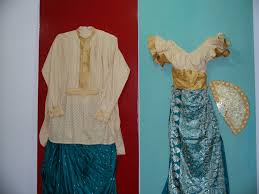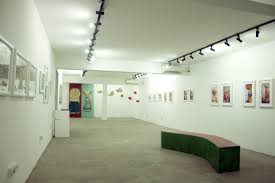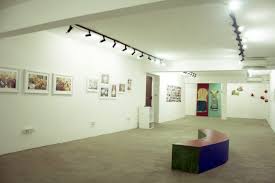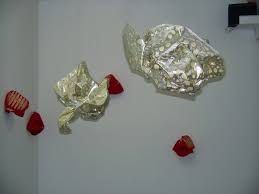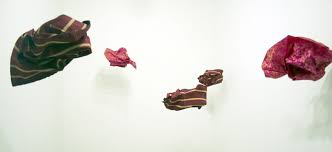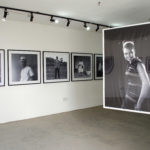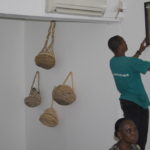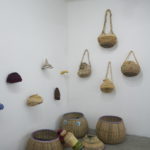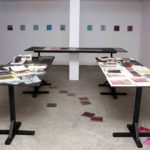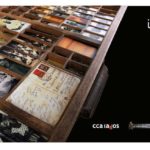Exhibition by: Jide Alakija
“Owambe, Aso-Ebi and the Politics of Dress”, featuring the images of London based Nigerian photographer Jide Alakija continues our programme of bringing the work of Nigerian artists based here and abroad to a Nigerian audience.
“Owambe, Aso-Ebi and the Politics of Dress”
“Owambe, Aso-Ebi and the Politics of Dress”, featuring the images of London based Nigerian photographer Jide Alakija continues our programme of bringing the work of Nigerian artists based here and abroad to a Nigerian audience. Since the beginning of the year, we have presented the works of Mudi Yahaya, Victor Ehikhamenor, Otobong Nkanga, Adejoke “Wahala Temi” Tugbiyele, Odun Orimolade, Amuche Nnabueze and Temitayo Ogunbiyi. We have also hosted artists and scholars such as Yinka Shonibare and Prof Dele jegede. This exhibition also provides the opportunity to continue CCA, Lagos’ ongoing curatorial and research project which has focused on the sartorial over the past two years.
Over the past six years Jide Alakija has developed a substantial repository of images during his career as a commercial wedding photographer. In his personal photographic practice, Alakija highlights the disparate social and cultural experiences of his environment, however, through the one hundred and thirty photographic images presented in “Owambe, Aso-Ebi and The Politics of Dress” his images capture the quintessential characteristic of Nigerian traditional weddings – the wearing of the Aso-Ebi – here and abroad. The idea of Aso-ebi (cloth of the family or kin) was traditionally worn by close family members as a form of identification, of belonging to a group.
In the seminal publication edited by Jean Allman, “Fashioning Africa: The power and politics of Dress”, (Indiana University Press 2004), the essay “Dress and Politics in Post-World War II Abeokuta (Western Nigeria)”, by Judith Byfield highlights how the Nigerian elite refused to wear Victorian dress introduced by the colonialist as a form of protest as well as a form of commitment to their political and cultural values as Yoruba. In another paragraph Byfield narrates tactics the now legendary activist, Mrs Ransome Kuti – then an emerging voice for Abeokuta Women’s Union – used dress as a tool of political power and protest. To encourage a sense of belonging and communal identification as well blur the class, educational and economic disparities of her milieu and of the market women everyone wore the same cloth – usually adire indigo cloth – during the protest marches to the regional colonial office against the imposition of tax levies.
It is difficult to ascertain whether this could be considered the beginnings of the concept of Aso-Ebi beyond the small group of inner family members. However, it is evident that from the late nineteenth century and throughout the twentieth century the fashion of iro (wrapper), buba (blouse) and gele (headtie) and as well as the ipele (scarf) – for formal dress or for the elderly – evolved to signify and be identified as a Yoruba way of dressing. Several Nigerian artists – Yoruba and other ethnic groups – have made the Aso-Ebi a subject of their work. A case in point is Lagos based visual artist Segun Adejumo, whose women in their Aso-Ebi at weddings and other ceremonies is a recurring motif in his paintings. In 2005, London based sculptor Sokari Douglas Camp created for the forecourt of the British Museum a 2.5 metre galvanised steel sculpture of five women in green lace and pink headtie. Titled “Aso-Ebi” or “Lace, Sweat and Tears”, the sculpture celebrates the beauty of the culture whilst the second title alludes to the detrimental and unspoken financial burden that can result in trying to keep up with the culture of Aso-Ebi.
“Owambe, Aso-Ebi and The Politics of Dress” emphasises the cultural significance of this form of dressing and highlights the creative ingenuity of the headties. The visual cacophony in Alakija’s images reflects the activities of enjoyment – ariya, (jollification), miliki, faaji (dancing and eating) as well as the language – mo gbo mo ya (I heard, therefore I came (uninvited) that have developed around these social events now popularly know as owambe (it is all there). Nevertheless, embedded within a closer reading of Alakija’s images, the beautiful people and beautiful images belie a more sinister reality; that many women’s obsessive need to ‘keep up appearances’, to be part of the ‘in’ crowd results in dire financial consequences that impact sometimes tragically on their professional and personal lives. lives. “Owambe, Aso-Ebi and the Politics of Dress” allows us to engage with and explore the complexities of our contemporary reality.
Jide Alakija was born in London, England in 1977. He holds a Master’s degree in Mechanical Engineering from Imperial College, London. He took up photography in 2003 oscillating between his personal photographic projects and his commercial work.
“Owambe, Aso-Ebi and The Politics of Dress” is his first solo exhibition. His work has recently been included in group exhibition such as Nigerians Behind the Lens, Tafeta + Partners at Bonhams, London (2011) Reflections, British Council, Lagos, Reconstruction in Reverse, Omenka Gallery, Lagos, Making Local Governance Work (with The Orderly Society Trust) Terra kulture and CCA Lagos (2010) Collective exhibition cycle at Camden Art Gallery, London, (2008) Words are not enough, Candid Arts trust, Islington, London (2007)
Photographs by Jude Anogwih
